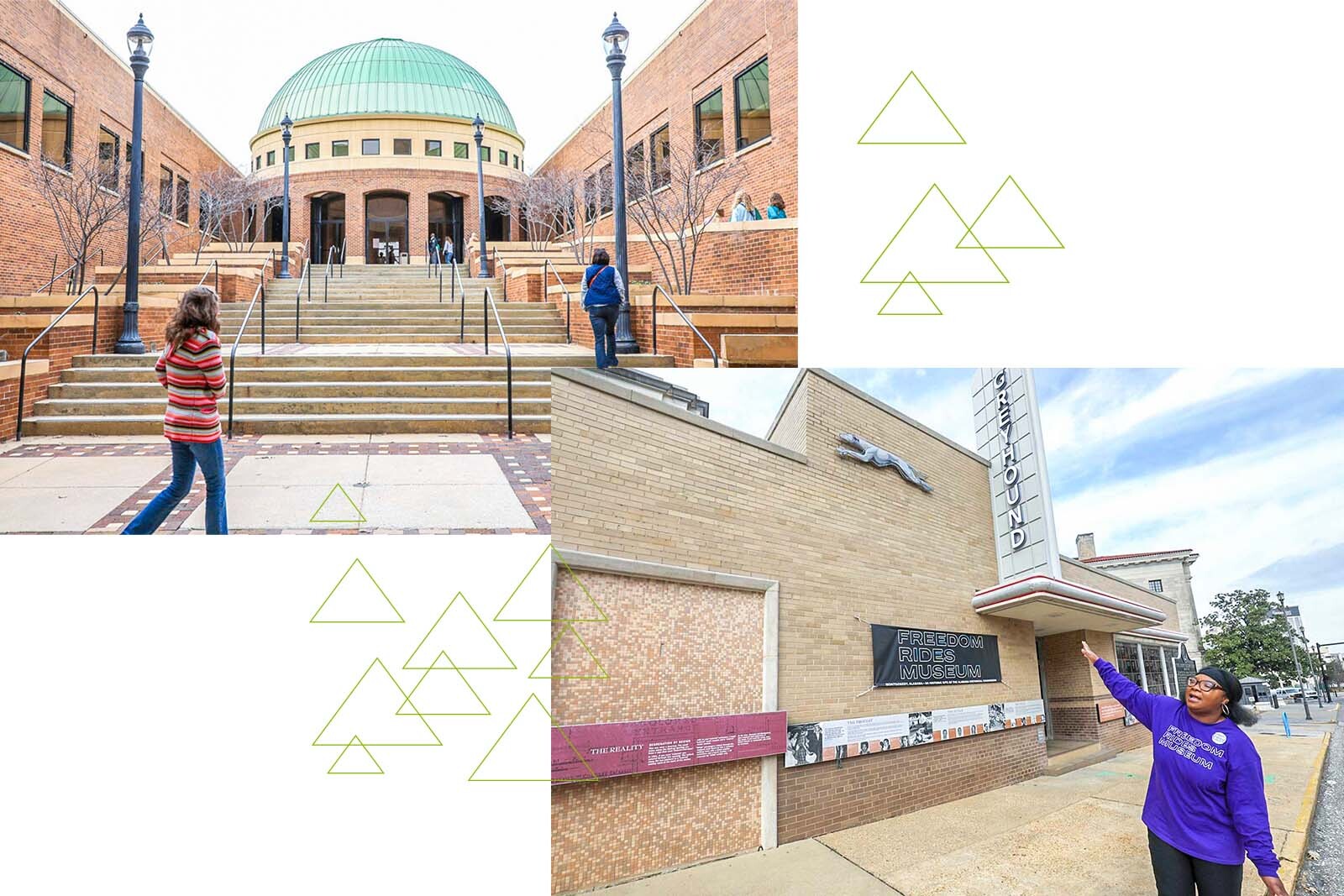Admittedly, Good Towns is one of our favorite assignments. It’s a chance to shine the light on the communities that make America unique, filled with culture and history.
This month, we celebrate Black History Month with some of our favorite blasts from the past. By looking at where we’ve been, we have a better vision of where we are going.

So, take a few minutes and join us on this virtual journey. If we’ve done our job well, you’ll want to follow up with a visit in person.
Happy road tripping.

It’s the headquarters of both Regions Bank and the Southeastern Conference and earned its nickname, the Magic City, for its rapid growth. But it’s also an epicenter of the Civil Rights Movement. There’s no better start to this journey than the Birmingham Civil Rights Institute, which chronicles America’s long struggle for equality.
Legend goes that Robert Johnson sold his soul to the devil where Highways 61 and 49 intersect, creating the Delta Blues. Arguably the greatest blues guitarist in history, Johnson soon spread the sound all over the world. We found it’s still going very strong today at a Clarksdale night club, which folks pack every weekend to hear a new generation carry the bass-thumping torch.
Deep in the bayou, not far from New Orleans, we explored “food for the soul,” down-home Cajun cuisine that can’t be missed. And we learned the role the food played in history at the Finding Our Roots African American Museum, a fascinating venue located in the city’s first Black high school.
In the state’s capital city, we honor the foot soldiers who fought for equity. That includes Rosa Parks, a seamstress whose refusal to give up her seat on a segregated bus led to change that reverberated worldwide. Downtown is loaded with history and reminders of the struggle, as well as hope for the future.
In 1965, non-violent protesters including John Lewis withstood the “Bloody Sunday” assault from state troopers to send a message to the world about racial injustice. This moment, captured on news cameras and beamed across the globe, proved a turning point in the Civil Rights Movement. Today, Selma honors its past with the interactive Selma Interpretive Center, located at the foot of the Edmund Pettus Bridge.
The history in this East Alabama town remains unparalleled. It’s the hometown of Rosa Parks and Motown hitmakers, the Commodores. And it’s the setting for Moton Field, where Black aviators from across the nation trained at the onset of World War II. Known as the Red Tails, the Tuskegee Airmen paved the way for integration, while serving a nation with honor in the skies of Europe.